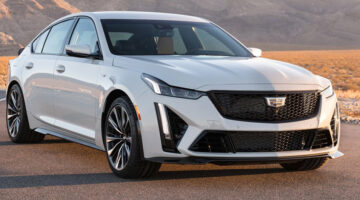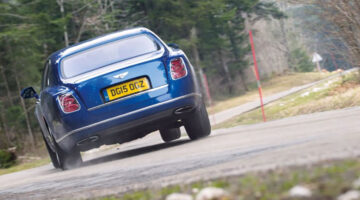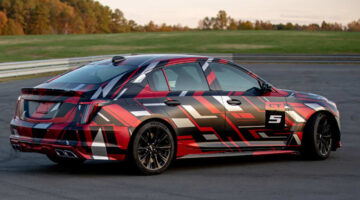The Cadillac ATS was developed at the Nurburgring, and was launched late last at the Yas Marina Circuit in Abu Dhabi. crankandpiston decided to drive from one to the other, taking in 12 countries in 26 days.
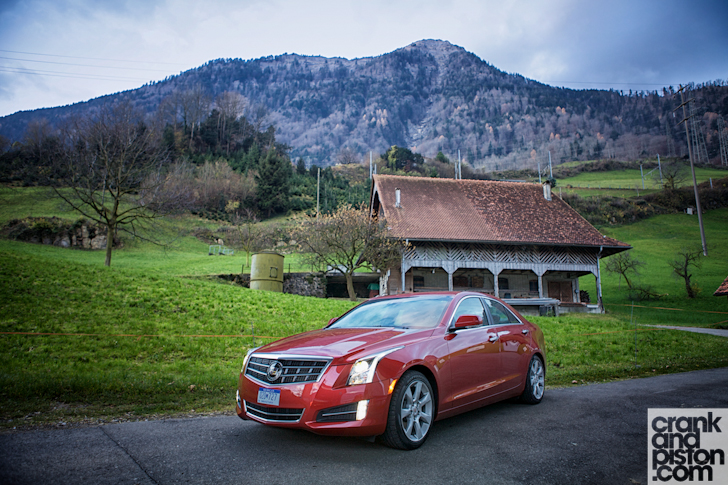
I’m partial to a good road trip. A few days with some good friends, interesting sites and fun times – what could be better? This is something else though. This is a road trip of epic proportions, covering some 10,000km and taking in 12 countries. This is not a weekend pootle.
Why am I doing this? Well, I’m taking a break from being a journalist and putting on my TV presenter’s hat. I, and crankandpiston’s own Phil McGovern, have been asked to drive the new Cadillac ATS from the Nurburgring in Germany – where the car was developed – to Abu Dhabi, to the launch event at Yas Marina Circuit, making amusing videos on the way.
That was the initial plan, anyway. Early on in the logistical organisation of the event, it became clear that getting all that way in time for the launch wasn’t going to happen. But going from racetrack to racetrack seemed like a good idea anyway, so Yas Marina remained the ultimate goal, albeit a couple of weeks after the launch. And so, after much planning and buying of cold weather clothing, I find myself at Frankfurt Airport with Phil, and cameramen Tom, Moe and John. We’ve cleared customs with a big pile of camera equipment, and now we have to find the cars.
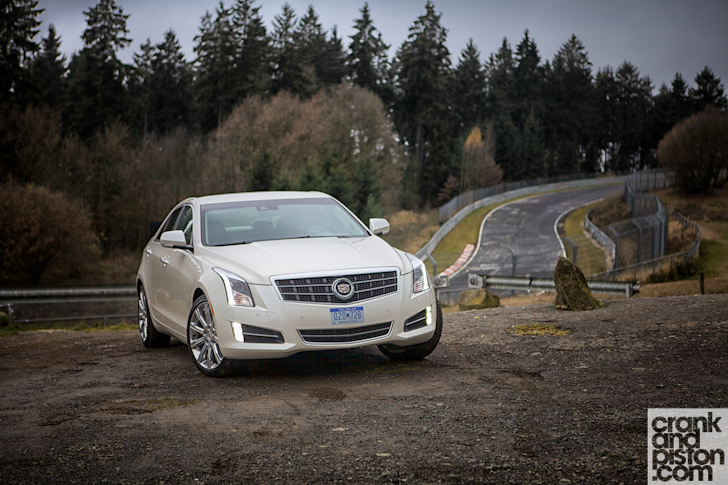
My biggest concern on this trip was that I’d have to be nice about a car I didn’t really like. None of Cadillac’s previous offerings, save for the CTS-V, have particularly moved me, and although the prospect of a month on the road was alluring, doing it in a substandard car didn’t.
Thankfully, on arrival at the garage in Frankfurt where the cars had been shipped from Detroit, my hopes rise. The ATS is a smart looking machine. Built as a rival to the BMW 3 Series, Mercedes-Benz C-Class and Audi A4, it’s got sleek looks and a much-improved quality of interior compared to other Caddy models. Under the bonnets of our two examples are 3.6-litre V6 engines, each pushing out 318bhp and 267lb ft to the rear wheels. We’ve got a red car and a white car, as well as an SRX SUV as the support vehicle and camera car. There’s no time to waste – to the Nurburgring!
Although an American brand, General Motors has a permanent test centre literally next to the Nordschleife, and it was the testing of the ATS at the famed track that led to our decision to start the journey here. Sadly, on the day we arrive, the Nordschleife is closed to the public. And frankly, even if it wasn’t, we’d have struggled to get around in freezing conditions. Ice and a famously tricky race track is not a great combination. So after a short detour to spend some euros at the famous petrol station-cum-model shop adjacent to the main straight, we get on the road for Hockenheim. Race tracks, you will note, are to become a recurring feature of this trip.
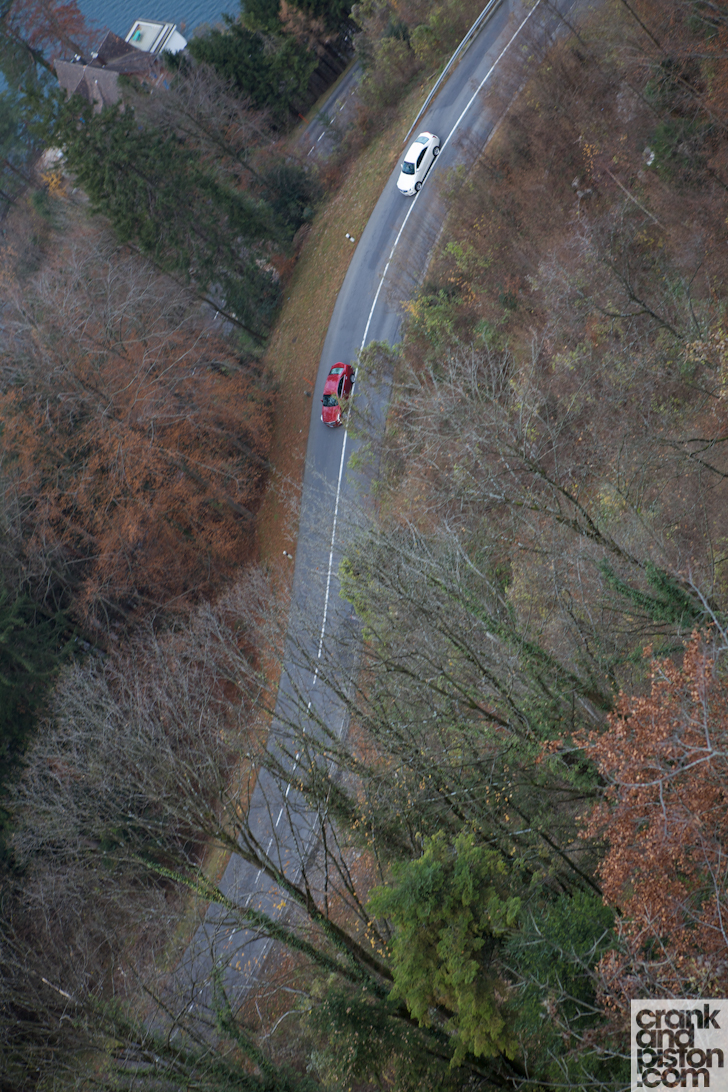
Due to weather and traffic, we arrive too late at the Hockenheimring to take part in the track day that’s taking place. But it’s worth the visit just to watch European car culture in full flow. There’s no big event on, but the track is still full of a vast range of cars, from a fire-spitting R34 Skyline to a Honda Civic and a blue chrome BMW 1 series. Outside in the car park, the local radio controlled car club is in full swing.
How would the ATS have got on at the track? At this stage, it’s hard to say. It’s certainly got poke, but thus far we’ve only cruised down the autobahn. And both the cars have acquitted themselves extremely well. They’re similarly specced, although one has fancy magnetic suspension and the other doesn’t. These differences will hopefully make themselves apparent later on in the trip. For now, I’ve extremely impressed with the step forward in interior quality that Cadillac has taken. It’s not quite up to Audi standards yet, but it’s a world away from the cheap plastics and disappointing build quality that’s plagued previous models. There are gadgets aplenty too, my favourites including the motion sensor on the touch screen that brings up audio controls with a wave of the hand. And the Bluetooth system lets me play the considerable contents of my iPhone wirelessly.
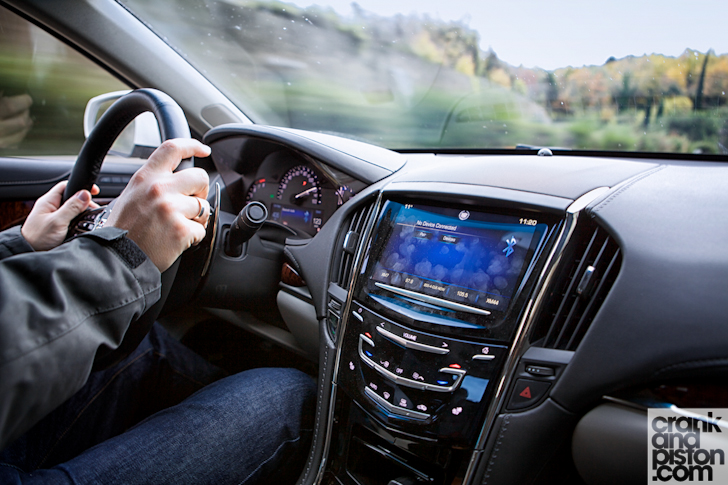
Day two sees a brief sojourn into France and half an hour in Strasbourg before we continue south to spend the night in Zurich, Switzerland. Two days down, three countries ticked off, and the following day we make it four as we cross the Alps into Italy. The scenery is spectacular and the roads much more exciting – fast, sweeping dual carriageway winding its way over valleys and through tunnels, snow-capped peaks peering over our progress. The ATS feels superbly confident along here. It’s planted at speed and, in the car with magnetic ride control, flat through all the changes of direction. The steering is meaty, the gearbox, set in sport mode, quick to respond via the wheel-mounted paddles. Check me out – I’m having fun in a Cadillac.
Monza is our destination, a racetrack famous to fans and drivers around the world for decades. We visit on the day of the Monza Rally Show and most visitors are there for MotoGP star Valentino Rossi (who wins the event), but the highlight of my visit is the chance to climb the old banking. In years gone by, when men were men, cars were huge and seatbelts hadn’t been invented, these huge concrete bends saw heroes roar by at speeds I can barely comprehend, often without even a helmet for protection. Records were set and lives were lost here, and after a 10-minute search through the Monza Park woods, I find the old Curva Nord. It’s extremely steep, difficult even to run up. But it’s evocative beyond words, especially with the Italian commentary and blatting rally engines echoing from the future in another part of the track.
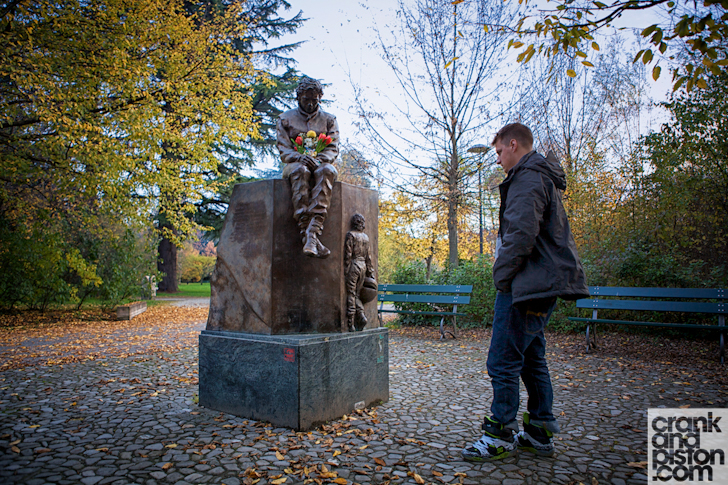
The next day we venture further into Italy. After a stop at the Mille Miglia Museum in Brescia, a beautiful former monastery filled with memories of road racing in North Italy, we arrive at Imola, just before the sun sets. The Autodrome Enzo e Dino Ferrari sits literally in the middle of the town. We don’t have time to drive the track, but we’re not here for that. We’re here to find the Tamburello corner, and the memorial to the man that died there one Grand Prix weekend in May 1994.
In a park on the inside of Tamburello, we find the moving statue dedicated to Ayrton Senna. Almost two decades after he died, on a fateful weekend that also claimed the life of Austrian driver Roland Ratzenberger, fans of Senna continue to flock to the circuit. They bring flags, toys, messages of adoration for a man that touched the hearts of millions with his blend of compassion for others, incredible skill and a ruthless determination to win. I find the whole experience rather emotional, as a beautiful golden sky signals the end of the day.
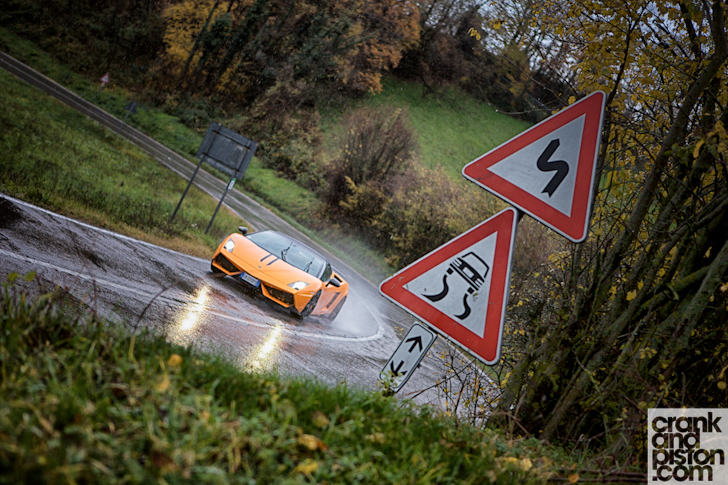
Morning sees a short drive from Imola towards Modena, and the small village of Sant’Agata Bolognese. The home of Lamborghini. As we were passing nearby anyway, we dropped them a line ahead of time to see if could come and look around. “Of course!” they said. “And would you like some cars to drive?”. Silly question. On arrival at the vast factory we’re met by PR girl Chiara, who cheerfully presents us with the keys to a Gallardo LP 550-2 and a Gallardo Spyder Performante. We’re excited. But there’s a catch – the weather is abysmal. Sheeting rain is puddling up all over the narrow roads of Emilia-Romanga. I jump into the two-wheel drive LP550-2, which is the first Lamborghini I’ve driven with a manual gearbox. It’s glorious, with a rifle-bolt action and an addictive chu-chink on each shift. It’s also a complete handful. Flat out acceleration on a straight bit of road sees the rears lose traction at around 120kph, and my heart leaps into my mouth. Even with all the traction control turned on, it’s ready to bite. Phil has similar problems when he tries the tail-happy Lambo. It might kill you, but hot damn it’s fun. The Performante Spyder is also a giggle, but it’s the rear-wheel loon that will stick in the memory.
A tour of the factory follows back at Lambo HQ, and it’s intriguing. In contrast to the robot-filled warehouses I’m used to seeing at volume manufacturers, the Sant’Agata facility is filled with people. With hand tools. Literally hammering in pistons, and sewing upholstery on a sewing machine. What a refreshing change.
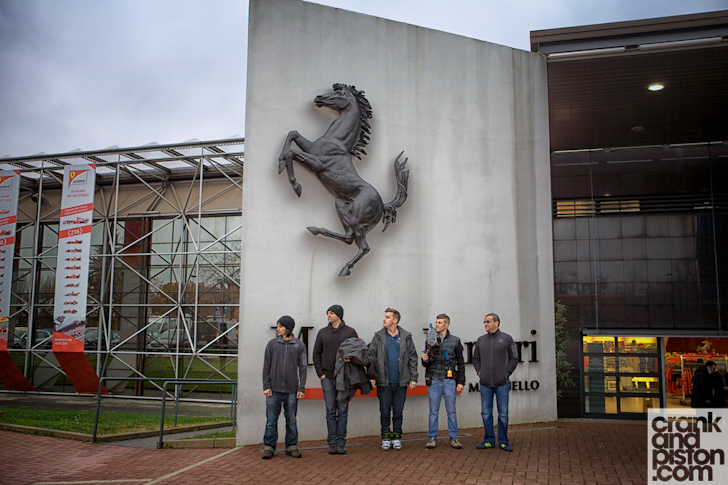
As we’re in the area, the following day sees us pop to Maranello. We tour the Museo Ferrari, which houses plenty of intriguing machines, most notably a Pininfarina-designed safety concept Formula 1 car from the late 60s, which contains quite a few features we see in racing today. We’re also offered a tour of the Ferrari factory, but sadly no cameras are allowed. A shame, as it climaxes with Ferrari Classiche, a gold mine of vintage Prancing Horses being restored to their former glory. When we visit, the facility is home to, among others, Phil Hill’s 1961 Le Mans-winning 250 TRI/61, Steve McQueen’s 275 GTB/4 and two 250 GTOs. The GTOs alone are worth an incredible $93 MILLION. We comment that the dozen or so cars in Classiche are probably worth more than all the modern cars on the production line. The manager concedes that this is probably correct.
The following day sees the furthest drive so far, from Maranello to Rome, via a quick stop in Florence. It takes the whole day – half a day to reach Rome, and another half day to navigate through the narrow streets and crazy traffic to our hotel. Never in my life have I seen so many Smart Fortwos as in Rome, and it doesn’t take long to realise why. When we tour the city and its spectacular the following day, we leave the ATSs in the car park.
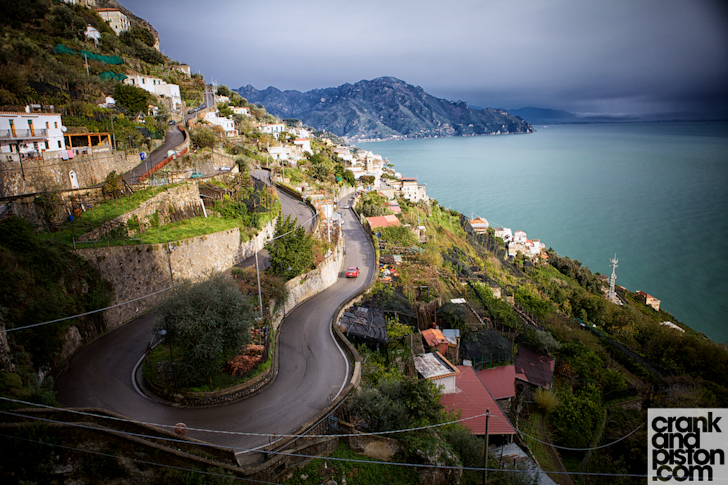
The southern push continues, halted temporarily by a rear puncture courtesy of dreadfully maintained roads near the town of Cassino. While we wait for Angelo, a friendly local tyre dealer to replace the burst rubber, I ruminate on the chance that has led us to the site of one of World War II’s bloodiest battles, where tens of thousands of troops battled for control of Montecassino, the mountain overlooking the town.
Rebooted, we pilot the ATSs on towards the boot of Italy, pausing briefly at the ancient town of Pompeii to gawp at the havoc and preservation wrought by Mount Vesuvius, which continues to loom over the site almost 2000 years later. But there’s no time to hang around, as we have to get to the town of Amalfi by evening. And once again, the weather is closing in. As we rise into the mountains outside Sorrento, the heavens open again, sending another deluge our way. But we’re away from the motorways now, and these roads are really quite epic. And quite soggy. They’re forever twisting their way through the peaks, circling around the highest points and never straight for more than a few metres. The whole hour-long drive is done in second and third gears. But what a drive it is. For the first time, we get a chance to explore the handling proper of the ATS, and it’s really impressive. There’s a sharpness, a sportiness to its character – not quite as direct as a BMW, but the front is keen and the rear happy to waggle. As I in the red ATS follow Phil in the white car, I’m treated to a series of impressive drifts. As the rain eases and we see the Mediterranean stretch out on the horizon, he gets on the walkie-talkie and enthuses about the drive we’ve just have. I agree wholeheartedly – the rest of the trip will have to go some to beat that.

